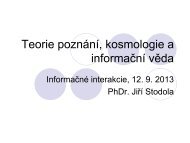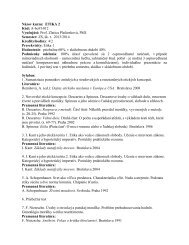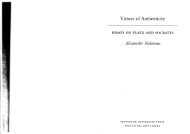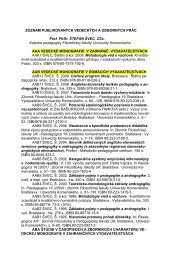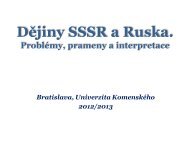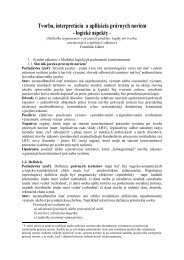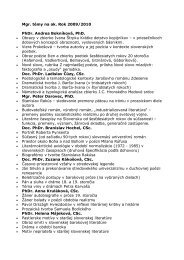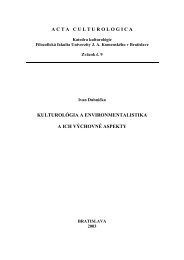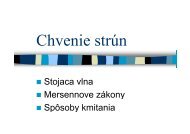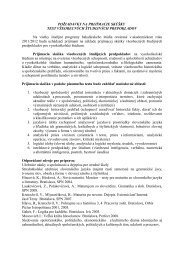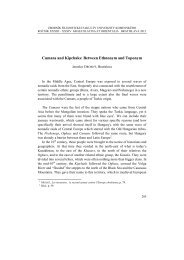Create successful ePaper yourself
Turn your PDF publications into a flip-book with our unique Google optimized e-Paper software.
union<br />
locomotion,<br />
, indicate it<br />
ound,' while<br />
; oppo ed to<br />
polyemou<br />
en e .<br />
on the ame<br />
er <strong>and</strong>, tranog,<br />
run, <strong>and</strong><br />
ne lexernes'<br />
a member<br />
d jog/sprint<br />
d to contra t<br />
to de cribe a<br />
IId sprint ing<br />
: hyponymy<br />
:ly)of move.<br />
.ither run or<br />
. a for stroll<br />
can pretend<br />
iere there i<br />
like aunter<br />
initely saun-<br />
Iarea) could<br />
are potential<br />
hi diagram,<br />
<strong>lexical</strong> <strong>and</strong> <strong>semantie</strong> <strong>relations</strong> 127<br />
there i a box above walk.jog, run, <strong>and</strong>jump that contra t with crawl.<br />
We can describe what that box symbolizes - the category of upright,<br />
bipedal locomotion - but there is no particular English lexeme that<br />
cover this meaning.<br />
Box diagram are also useful for comparing emantic field across language, in<br />
order to ee differences in <strong>lexical</strong>ization.<br />
Puzzle 6-4<br />
Devise a box diagram for the f llowing COLOR words.<br />
red,purple, yellow. bille, cala 1', lavender, scarlet, orange, green, crimson<br />
To test your diagram:<br />
From the bottom up, ask your elf whether the lower word name 'type<br />
of the above color .<br />
A k your elf whether all the color name on any horizontal level<br />
contrast with one another.<br />
Alternatives to box diagram include repre enting emantic <strong>relations</strong> a a<br />
network of sense with line linking related enses (e.g. Word et, Fellbaum<br />
1998b) or by creating attribute-value rnatrice (see §3.2.l) in which <strong>lexical</strong><br />
entries have features like A TO N Y M <strong>and</strong> s Y o Y M <strong>and</strong> the values speci fied<br />
for those features are other lexeme - a done in Meaning- Text Theory (MIT;<br />
Meľčuk 1996). The e are all fairly equivalent (e.g. the AVM in MIT could be<br />
"translated" into a network diagram). The box diagram, however, give a sen e<br />
of the" emantic pace' that the lexemes take up, o one can visualize certain<br />
use of walk (e.g. to denote 'power walking') a clo er to thejog boundary than<br />
other u e .<br />
Evaluating the thesaurus approach<br />
Proponents of thesauru -style <strong>lexical</strong> model hold that the relation that one<br />
word ha to others at lea t part1y determine the word' sen e. In other word,<br />
no meaning exi t in a vacuum, in tead meanings are created through relation .<br />
Box diagram how the e relation within the ernantic field. Space are "car ved<br />
out" for individual lexeme , <strong>and</strong> one can imagine the "ten ion" between word<br />
at their boundarie .<br />
One type of evidence for the idea that <strong>lexical</strong> meaning depend on relation<br />
i the phenomenon known as <strong>lexical</strong> blocking, which can be exemplified by the<br />
meaning of finger <strong>and</strong> thumb, hown in the box diagram in figure 6.6. Finger<br />
can mean 'any digit of the h<strong>and</strong>', as in 1 have ten fingers. But that 'any digiť<br />
meaning i blocked when one refer to a ingle finger. So, if omeone say 1 broke<br />
my finger, you would probably feel mi led if you di covered that the finger in



